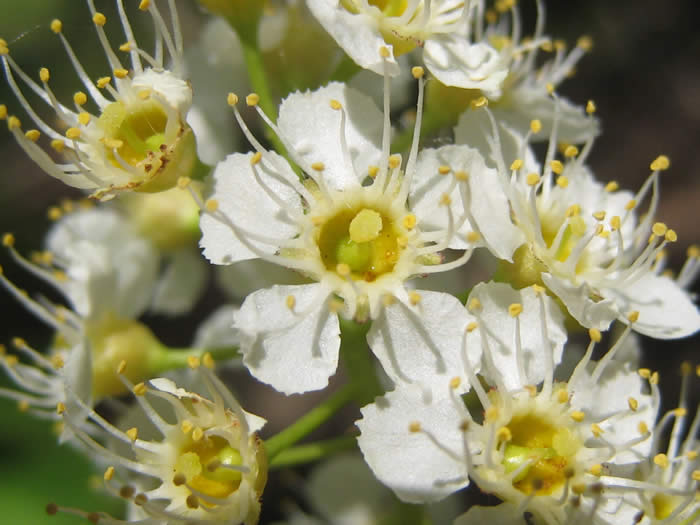Choke Cherry - Prunus virginiana
This shade intolerant shrub is found all over southern Ontario and was used for medicinal purposes by early settlers. It is important to note that all parts of the tree with the exception of the cherry flesh contain hydrocyanic acid, which is poisonous to humans. Since the Choke Cherry is quick to grow on exposed stream banks an land that has recently been logged, it helps to prevent erosion by stabilizing the soil. A wide variety of game and songbirds eat and disperse the chokecherries.
The leaves of the Choke Cherry range from 5-10 cm long with sharp teeth, they usually end in a hair-like point. The mature fruit hangs in clusters of 6-12 and each measure 8-12mm across. Photo by Jesse Wolf.
The bark of the Choke Cherry becomes darker with age and mature specimens are almost black. Lenticels are present, but not in horizontal patterns which is characteristic of most other species in the Prunus genus. Photo by Jesse Wolf.
Choke Cherries are small shrubs, usually not exceeding 10m in height, and are often found in woodlands located on rocky terrain or other disturbed sites. Photo by Jesse Wolf.

Flowers of the Choke Cherry are found in cylindrical clusters that range from 8-15cm long. Photo by Sean Fox.

Ontario Tree Atlas map of non-planted Choke Cherry. 1995-1999.
References
Farrar, J.L.. 1995. Trees in Canada. Fitzhenry & Whiteside Ltd. Toronto. ON. 504 pp.
Kershaw, L. 2001. Trees in Ontario: Including tall shrubs. Lone Pine Publishing. Edmonton. AB. 240 pp
Muma, W. 2011. Ontario Trees and Shrubs. [Online] Available: www.ontariotrees.com
OMNR, 2011. Ontario Ministry of Natural Resources: Ontario Tree Atlas. [Online] Available: http://www.mnr.gov.on.ca/en/Business/ClimateChange/2ColumnSubPage/267027.html
OMNR, 2008. Ontario’s Biodiversity: Species at Risk.